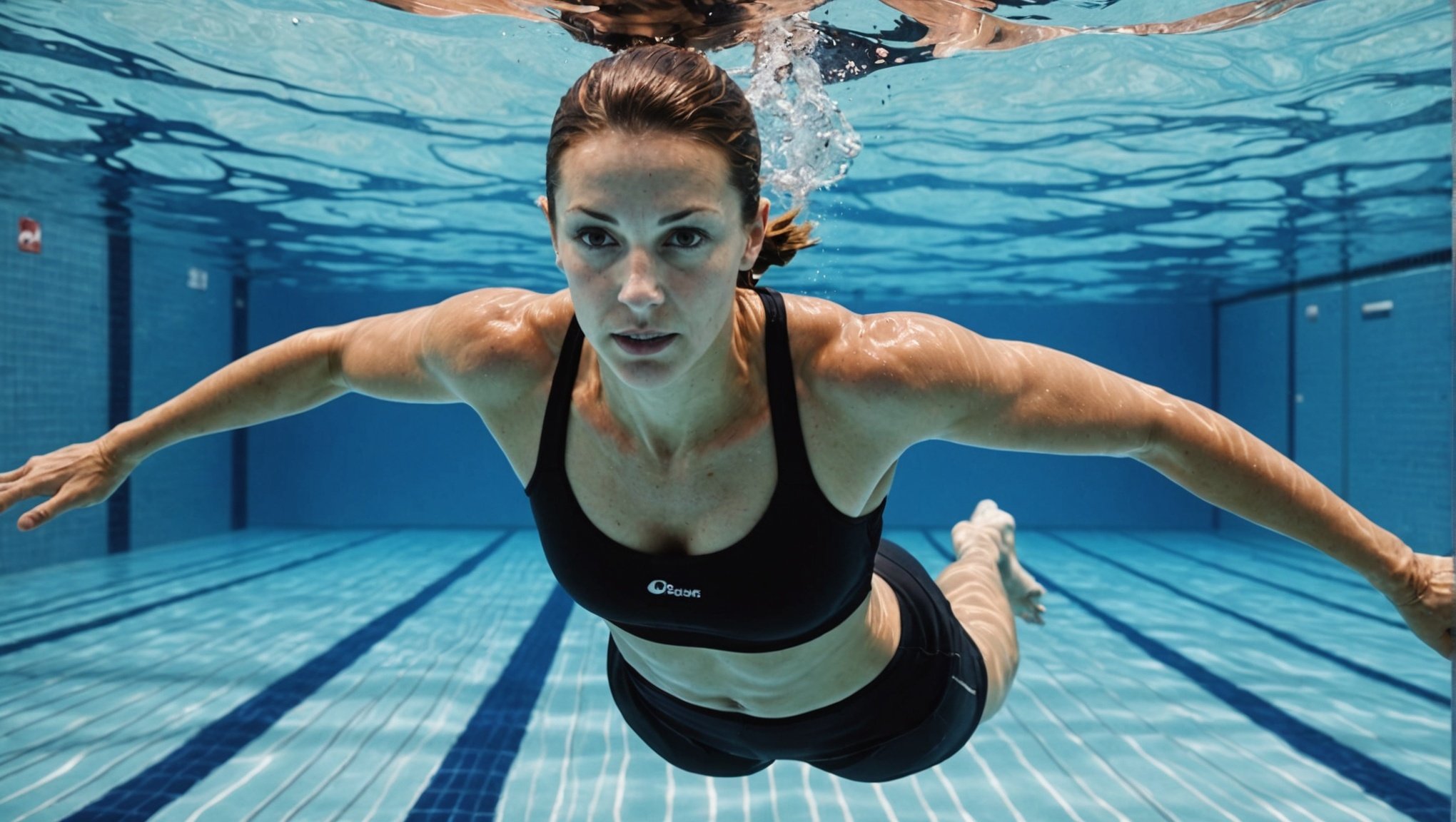Whether you’re a fitness enthusiast looking to spice up your training regimen, a swimming aficionado seeking to improve your freestyle technique, or simply someone who enjoys the therapeutic benefits of water, having a pool in your backyard offers endless opportunities for rest, relaxation, and exercise.
While many UK residents consider owning a pool a luxury, it can also serve as a practical tool for maintaining and improving physical health, offering unique workouts that are both challenging and enjoyable. One such beneficial modality is underwater exercise, which combines the principles of aquatic therapy and fitness training to create an optimal workout environment.
Sujet a lire : What are the signs that your swimming pool needs resurfacing in the UK?
In this article, we’ll explore some of the best underwater exercise routines that UK pool owners can incorporate into their regime, from swim-intensive workouts to aqua-based therapy exercises.
Lap Swimming: More Than Just a Leisurely Swim
Lap swimming is perhaps the most common workout that springs to mind when we talk about pool exercises. It’s an excellent way to burn calories, build endurance and improve your overall fitness levels.
A lire aussi : What safety equipment should always be near your UK home swimming pool?
A typical lap swimming workout often involves alternating between different strokes such as freestyle, breaststroke, backstroke, and butterfly. This not only adds variety to your workout but also enhances overall body conditioning since each stroke targets different muscle groups.
Freestyle, for instance, is an excellent cardiovascular workout that also strengthens the upper body and core. A standard freestyle workout could consist of swimming 100 yards at a moderate pace, then resting for 15 to 30 seconds before repeating the set.
Variations of swimming laps can also be introduced, such as sprint intervals (swimming as fast as possible for 25 yards with short rests in between) and endurance sets (swimming for longer distances without rest).
Aqua Jogging: The Low-Impact, High-Intensity Workout
If you want a break from the rigors of lap swimming or simply want to diversify your pool workouts, aqua jogging is an exciting option. Essentially, aqua jogging involves running in the water, usually with the help of a flotation device to maintain an upright position.
Aqua jogging is a fantastic form of exercise that offers the cardio benefits of running, but without the stress on your joints. This makes it particularly beneficial for those recovering from injury or individuals with joint issues.
An aqua jogging session could start with a 5-minute warm-up, followed by 30 seconds of high-intensity jogging and 30 seconds of rest. This pattern could then be repeated for a desired number of sets.
Underwater Strength Training: Boost Your Muscles without Weights
Strength training isn’t only limited to the gym. With the right exercises, your pool can become an effective strength-training arena.
Underwater strength exercises typically involve resistance equipment like dumbbells, leg weights, or resistance bands, which are specially designed for aquatic use. The resistance provided by the water works against your body, helping to strengthen and tone your muscles.
Common underwater strength exercises include bicep curls, shoulder presses, and leg lifts. Just like traditional strength training, it’s crucial to perform these exercises with correct form and control to maximize the benefits and minimize the risk of injury.
Flexibility and Balance: The Core of Aqua Yoga
Aqua yoga is essentially practicing yoga in the pool. The water provides a unique, supportive environment that not only makes certain poses easier to achieve but also adds an element of resistance to the workout.
Aqua yoga can help improve flexibility, balance, and core strength, making it an excellent addition to your aquatic exercise regimen. Key poses to incorporate in an aqua yoga session include the warrior pose and tree pose, modified to be performed in water.
Aqua Therapy: Healing and Well-being in the Pool
Aqua therapy is a form of physiotherapy that takes place in water, usually a pool. It utilizes the buoyancy, resistance, and cooling effect of water to help manage conditions like arthritis, fibromyalgia, and post-surgical recovery.
Aqua therapy exercises are generally tailored to individual needs but could include a combination of gentle swimming, walking in water, or specific movements focusing on a particular body part.
While this article offers an overview of the best underwater exercise routines for UK pool owners, it’s important to remember that every body is different. What works for one person might not work for another. Therefore, always consult with a fitness professional before starting any new workout regimen.
High Knees in Deep Water: A Challenging Cardio Routine
High knee exercises aren’t just for land-based workouts; you can also incorporate this powerful cardio exercise into your pool training plan. Doing high knees in deep water adds an extra layer of difficulty, making it an exciting challenge for even the most seasoned athletes.
In a high knees pool workout, you’ll be mimicking the same motion as high knees on land, but the resistance provided by the water will intensify the exercise, making it more challenging and effective.
To perform high knees in the pool, start in waist-deep water. Lift your knee as high as possible, aiming to get your thigh parallel to the surface of the water. Ideally, you should also be engaging your core throughout this exercise. Once you’ve mastered the technique, you can add variation by moving to deeper parts of the pool.
While high knees is a fantastic cardio workout in its own right, it also strengthens the lower body and boosts stability. It’s worth noting that while high knees can be intense, it’s a low-impact exercise when performed in the pool, making it suitable for those with joint issues or injuries.
An underwater treadmill can also be a valuable tool for performing high knees, allowing you to maintain a regular pace and intensity. Remember to start slow and gradually increase the intensity to avoid injury.
Aqua Fitness with Pool Noodles: A Fun and Effective Workout
Pool noodles aren’t just for fun and games; they can also be used for effective aqua fitness workouts. These lightweight, buoyant devices can add resistance to your pool exercises, making your workouts more challenging and rewarding.
One of the best pool noodle exercises is the ‘noodle press down.’ In waist-deep water, hold the noodle vertically with both hands and press it down into the water until your arms are fully extended. Then, slowly let the noodle rise back to the surface. This exercise targets the arms and shoulders, and the resistance from the water intensifies the workout.
Another great pool noodle exercise is the ‘noodle bicycle.’ Seated on the noodle like a bike in a shallow pool, pedal with your legs as if you’re cycling. This exercise is a fun way to boost cardiovascular health and strengthen your lower body.
Remember, the key to a successful pool noodle workout is to maintain good form and control, just like in traditional strength training. Also, although pool noodles add a fun element to your workout, they can also be a useful tool for improving balance and coordination.
Conclusion
The convenience of having a swimming pool in your backyard is undeniable, but as a UK pool owner, you can turn this leisure facility into an effective fitness hub. By incorporating lap swimming, aqua jogging, underwater strength training, aqua yoga, pool noodle workouts, and high knees in deep water into your training plan, you can reap the benefits of aquatic therapy and fitness in the comfort of your own home.
Remember, swimming pool exercises are diverse and customizable to suit different fitness levels and objectives. Whether you’re aiming to improve cardiovascular health, strength, flexibility, balance, or recovery from an injury, the pool offers an array of low-impact, yet high-intensity workouts that are both enjoyable and beneficial for your health.
However, it’s crucial to consult with a swim coach or fitness professional to ensure your pool workouts are safe and effective. Also, remember to warm up properly before your workout and cool down afterwards to prevent injuries and optimize your performance.
So take the plunge, step off the edge of the pool, and dive into a world of underwater fitness. The pool is more than just a place for rest and relaxation; it’s a versatile training environment that can help you reach your fitness goals.
















